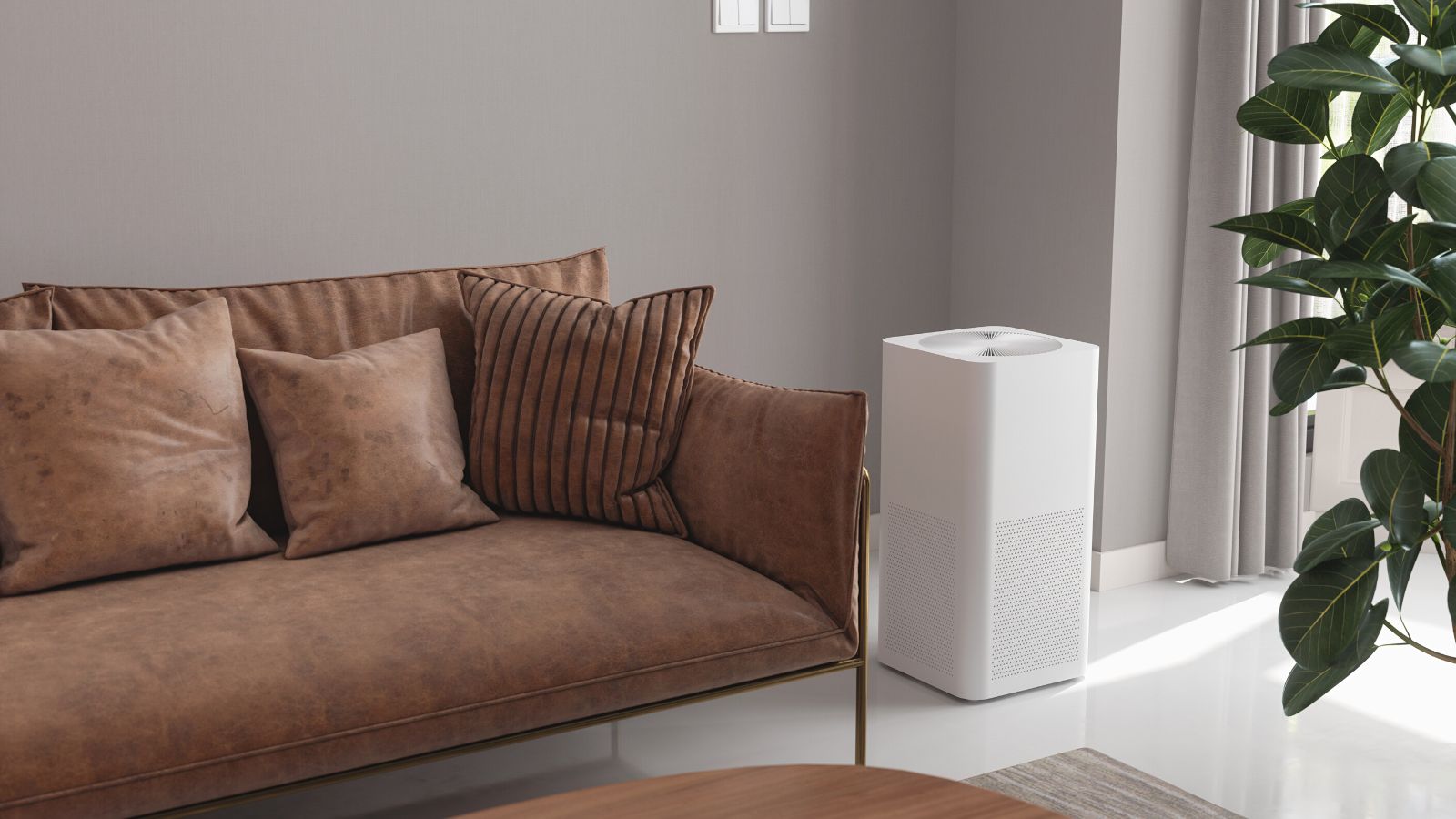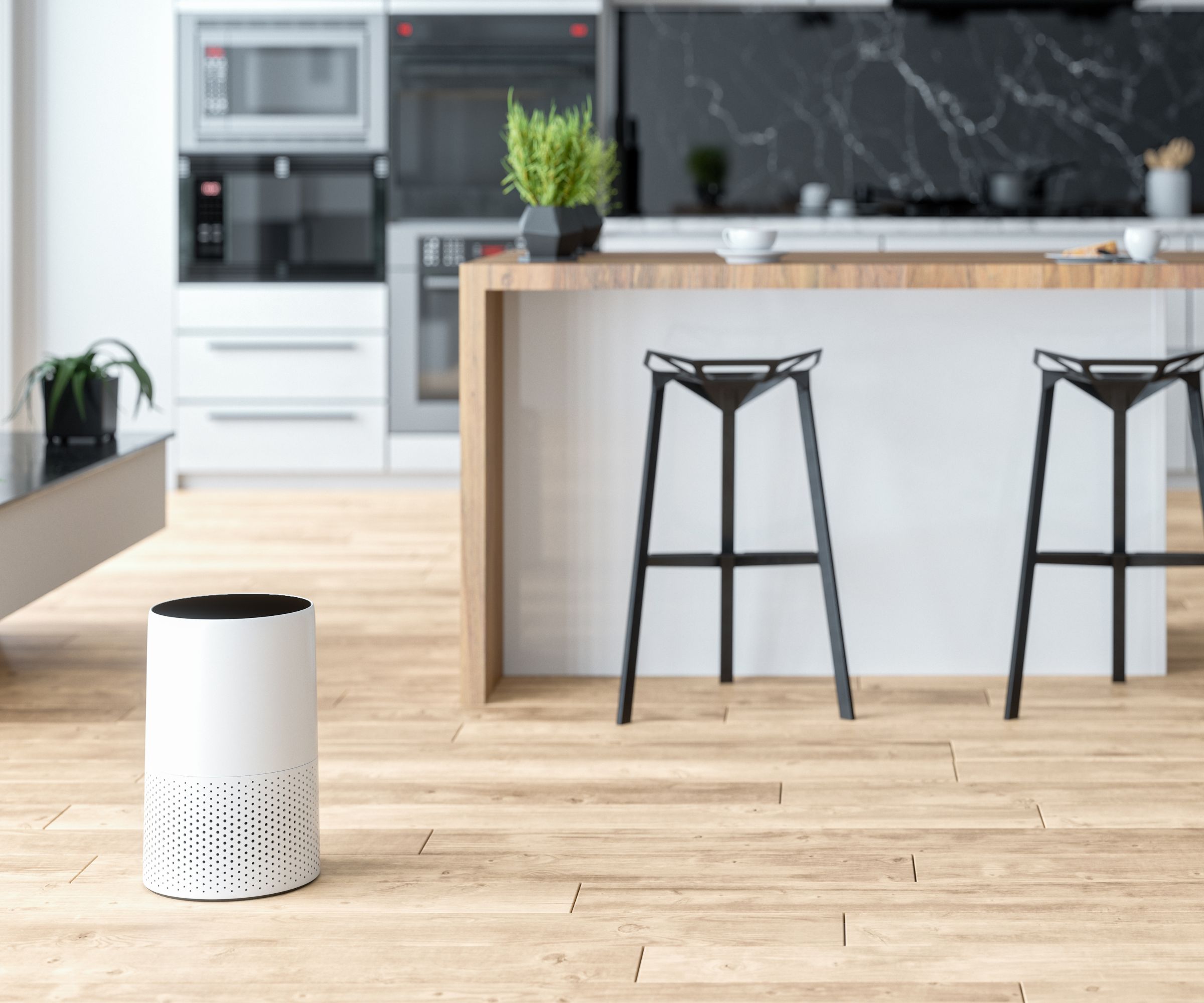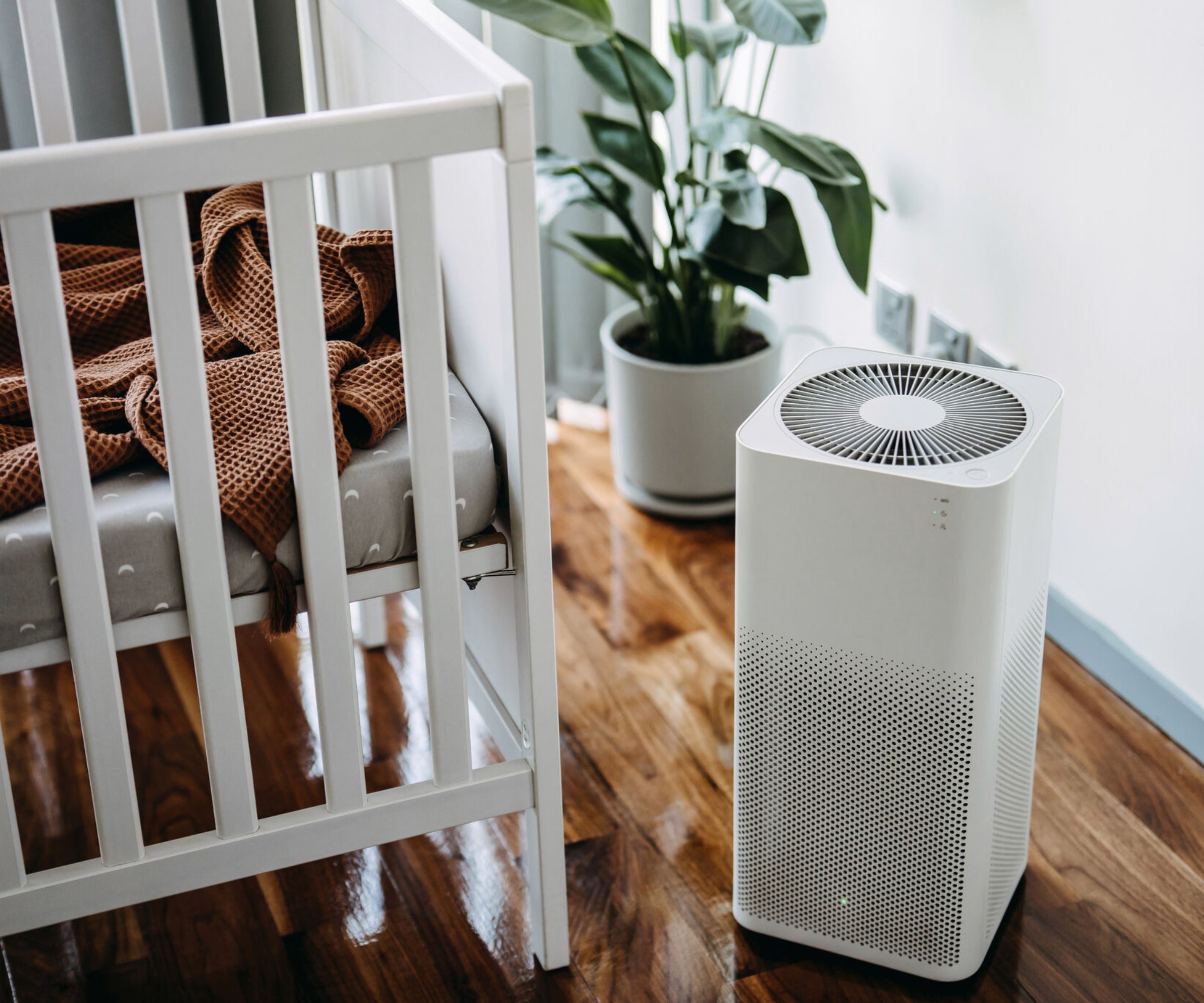
There are many reasons to tackle dust, whether to improve your home's air quality, to help with your allergies, or to get rid of unsightly dusty surfaces – but can an air purifier help to get rid of dust?
Getting rid of dust entirely is almost impossible. Dust is, after all, a by-product of living and breathing in any indoor environment. Nevertheless, experts suggest that investing in the best air purifiers can help to defeat dust – or at least help to significantly reduce it.
If you are wondering if an air purifier is worth it, keep reading to hear how air purifiers help with dust, how they work, and how to get the most out of them.
Do air purifiers help with dust?

When homemade cleaning sprays that repel dust aren't quite cutting it, air purifiers offer an easy solution to combating excessive dust throughout a home, explains John Ward, healthy living advocate and cleaning expert at Mold Busters.
‘Air purifiers work by using a series of filters to trap airborne particles such as dust, pollen, and pet dander,’ he says. ‘The filters in an air purifier capture these particles as air is drawn into the unit, and the newly cleaned air is then released back into the room.’
This is not too dissimilar to how the best dehumidifiers work, pulling in damp air before condensing and trapping the water to release the dryer air into the space.
An air purifier is not going to remove dust from surfaces, however, John cautions, as purifiers can only help with dust that is circulating in the air. ‘While they can help to reduce the amount of dust in the air, it's also important to regularly clean surfaces such as floors, furniture, and bedding to remove any dust that may have settled,’ he says.
But the benefit of air purifiers is to clean in a way that other appliances can't. Vacuuming and cleaning will remove any dust that's built up on the floors and in furniture, but it's easy to overlook how much dust lives in the air.
In our guide to the allergens that live in our homes, we revealed that settled dust can atomize and become airborne by our own activities, like getting up from the sofa and walking around. And if you don't have one of the best vacuum cleaners, chances are that dust flies into the air every time you go over the floors. Having an air purifier for these moments will capture those fine particles that have become airborne.
Below, we have compiled a list of some of the best cleaning tips to help your air purifier eliminate dust more efficiently, as well as some of the cleaning hacks to avoid if you don't want to make your air quality problem worse.
How to make an air purifier remove dust more efficiently

While an air purifier is a great quick tool for helping with dust, it is not as simple as popping it in the corner of a room and hoping for the best, warns Taras Stomic, HVAC/ADC department manager at Home Alliance.
‘Regular maintenance of your air purifier is important for several reasons. Not only does it ensure that the unit effectively filters harmful particles from the air, improving respiratory health and overall well-being, but can also extend the device's lifespan, saving you money in the long run.’
Here is how to keep your air purifier working its best to keep your home virtually dust free.
1. Regularly clean and replace air filters
One of the best ways to keep an air purifier working efficiently is to regularly clean or replace filters, says John Ward, healthy living advocate. ‘Filters can become clogged over time, reducing the unit's effectiveness. The frequency of filter cleaning or replacement will depend on the type of air purifier you have and how often you use it. Typically, the filters should be cleaned or replaced every three to six months,’ he advises.
If your purifier has replaceable filters, then picking the right type for your appliance is critical, adds Matt Kerr, appliance and tech expert, and CEO of ApplianceGeeked.
‘Ensure that you are using the correct sort of filter for your air purifier. Various filters are designed to trap different types of particles and for different machines, making research essential.’
2. Run the air purifier on a high speed
Running an air purifier 24/7 is not the best way to save money at home, but it can help if you are wanting to keep dust in the air at bay, says Nick Kornblith, senior product manager for Alen, leaders in HEPA purification, as particulate levels return quickly if the purifier is turned off.
‘It is also a good idea to run your purifier on the highest speed that is comfortable,’ Nick continues. ‘Since many purifiers are designed to emit lower levels of noise in a more pleasing sound frequency (pink noise) they often can be tolerated at higher speeds.’
But while this will be the most effective way of removing dust from the air, it isn't the most efficient, as keeping your air purifier running constantly will hike up your energy usage. You can choose your moments to make the most out of your air purifier's capabilities without keeping it on at all times.
3. Know when to turn it on
Air purifiers will only capture dust that exists in the air and won't pick up anything that's settled. So, to make sure you're maximizing the performance of yours, you can turn it on during times of high movement in the home.
Think: coming home from work, when the kids and pets are at their liveliest, and when vacuuming the house or changing the bed sheets. These are all periods where settled dust will be sent into the air, that the air purifier can then capture and remove from your space.
If you get into a routine of using it during these times of the day, you can capture large amounts of fine dust particles in the air without having to keep it running all day.
4. Locate your air purifier centrally, away from obstacles
Also a common dehumidifier mistake, locating portable appliances like air purifiers incorrectly can prevent them from filtering air as efficiently. Placing it too close to walls or other objects prevents good airflow, for example, John Ward explains.
‘Ideally, you should place the unit in a central location in the room so that it can circulate air effectively.’
5. Close windows and external doors when it’s running
When running an air purifier, it is best to keep external windows and doors securely closed to prevent adding more pollen and dust into your home while simultaneously trying to filter it out. Not only will this overwork your machine, but will prevent your air quality from improving and add more unnecessarily on your energy bill.
6. Clean the internal mechanisms of your air purifier to prevent dust build-up
There is more to cleaning an air purifier than just the removable filters, Taras Stomic reminds us. When any home appliance runs, it attracts dust – and not all of it is caught in the filter of the air purifier. Cleaning the internal components such as the blades, vents, and pre-filters (if your purifier has one) can all help to remove dust from the air more efficiently, they explain.
‘Always start any cleaning or maintenance task by reading the manufacturer's instructions and follow their recommendations,’ they advise. ‘You should also always unplug the device before cleaning too to avoid electric shocks. Wipe the exterior surfaces with a soft, damp cloth to remove dust and debris, then, clean the air intake and output vents with a brush or vacuum cleaner attachment to remove any debris that may have accumulated.
‘Clean the pre-filter if your purifier has one. It's usually washable, and you can clean it with soap and water before inspecting the fan blades and wipe them with a soft cloth to remove any dirt or dust that may have accumulated.’
Air purifiers that help with dust
Working as a fan with a HEPA filter built-in, it allows you to be sure that the air you're breathing is as clean as possible.
Our Blueair Blue Pure Fan air purifier review has more details.
The Shark NeverChange MAX shows the air quality of your room as a percentage, with an 'auto' mode that'll adjust to the best power level. It also has cleanable pre-filters that can protect the HEPA filter from being replaced for 5 years.
Our Shark Never Change Air Purifier MAX review goes into more detail.
This is one of the quietest air purifiers we've ever tested, and it's faster, more compact, and more affordable than many. It has a HEPA filter for fine particles and an air quality display,
Our Morento Air Purifier review has more in-depth info.
FAQs
How long does it take for an air purifier to remove dust?
How long it takes an air purifier to remove dust depends on the size of the purifier, the size of the room, and the amount of dust in the space. In a smaller room, a clean air purifier will remove dust in around 30 minutes, but it can take up to two to three hours for there to be any noticeable difference in a larger room.
Why is my house so dusty?
Dust is unavoidable in a house, as it is caused by skin cells, pet hair and dander, dirt, clothing fibers, and hair. The more people living in your home, or the more you are indoors, the more dust will accumulate as you go about your everyday life. What’s more, dust can also come in from outside, whether through windows and doors, on clothes and shoes, or on bags and products.
Your house may be particularly dusty if you do not clean and vacuum regularly, or if you do not clean your vacuum filter to help collect dust efficiently, too.
Air purifiers are well worth it if you want to reduce the level of dust in your home. While they can't promise totally dust-free shelves and display cabinets, these hardworking appliances are ideal for improving indoor air quality and keeping on top of dust alongside regular cleaning with the best cordless vacuums and the best vacuums for pet hair.







